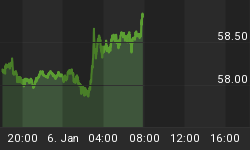The one constant in trading the precious metals market over the past two years is that patience has paid very well, once the next downside stair was taken.
Tie goes to the bear, so to speak.
When the illusion of QE's transmission to the commodity markets was broken with the blow-off top in the spring of 2011, the first stair lower quickly appeared.
Over the past six months since QE3 was introduced, silver - our emotional commodity proxy of choice for either the CRB or CCI - has mimicked the broader pattern and stair-stepped lower. And while the bulls are hoping that we have finally reached the bottom of this flight, the unfortunate truth is they have very little to show for it after basically running in place over the past month.
A disheveled Bill Murray in Caddyshack comes to mind.
"Hey, Lama, hey, how about a little something, you know, for the effort..."
To be fair, I'm sure there are plenty of bears (myself included) - that feel the same way.
Total consciousness, while quite appealing - still remains elusive.
Considering the troubles in Cyprus this week, I think many were expecting more of a running and fevered bid for gold and silver. Unfortunately, that perspective ignores recent history that suggests troubles in Europe have typically not translated into much lasting safe-haven demand for precious metals. For all their bluster of "protection" - so goes the euro: so goes silver, gold, the CRB - etc.
The euro continues to trade closely along our Mirrored Pivot glide path - while starting to normalize the typical inverse correlation it has held with the USDX.
We find it interesting that the literal "measured" moves (both the euro and USDX) from the Mirrored Pivot - are roughly proportional to the expectations of the secular comparative of the USDX.
All things being equal (USDX up:PMs down) - that still looks like a pretty big step to take for the precious metals sector.
As always - Stay Frosty.
- All stock chart data originally sourced and courtesy of www.stockcharts.com
- Subsequent overlays and renderings completed by Market Anthropology






















